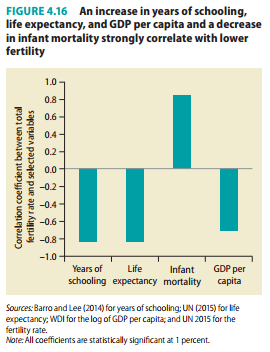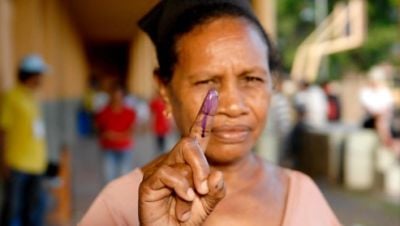The human development approach has long emphasized the importance of good health as a constitutive element that is both of intrinsic and instrumental value for an individual’s ability to thrive. Today, on the UN’s World Population Day, as global attention turns to the issue of family planning, it is important to underline the importance of safe and voluntary family planning services not only for individual health and wellbeing; for women’s empowerment and for prosperous communities and nations.
Family planning has well-documented health benefits for mothers, newborns, families and communities. Pregnancies that occur too early or too late in a woman’s life, or that are spaced too closely, harm maternal health and increase the risk of prematurity and low birth weight. The ability to delay and space childbearing is also crucial to women’s social and economic advancement. Women’s ability to obtain and effectively use contraceptives has a positive impact on their education and workforce participation, as well as on subsequent outcomes related to income, family stability, mental health and happiness, and children’s well-being.
However, the unmet need for contraception is still too high, and is intensified by a growing population and a shortage of family planning services. Current estimates note that approximately 225 million women who want to avoid pregnancy are not using safe and effective family planning methods. In Africa, almost a quarter of women of reproductive age cannot get the modern contraception they need. In Asia, and Latin America and the Caribbean – regions with relatively high contraceptive use – these levels are around 10 percent.1
Reasons range from limited choice of methods, lack of access to information, user or provider biases, to lack of support from their partners or gender-based barriers in communities.
While the issue of access to family planning, contraceptives and birth control products applies equally to sexually active men and women, the use of contraception by men remains relatively low, yet this has important implications for public health, including for the transmission of HIV and other sexually transmitted infections.2
Barriers stemming from inadequate health systems that limit access to affordable, available, quality products and services afflict many countries, particularly in the developing world, where the unmet need for contraceptives is higher. In almost all situations, women particularly adolescents, encountered many barriers to using existing services, including distant service delivery points, cost of transport, lack of knowledge about different types of methods, misinformation and misconceptions, religious opposition, cultural factors, language barriers with providers, and provider biases. So in addition to structural barriers, there are deeply embedded cultural norms around marriage and beliefs about female fertility, which inhibit people’s access to such products and services.
Lack of contraception can be particularly damaging to teenage girls. According to WHO, globally, about 16 million girls aged 15 to 19 and some 1 million girls under 15 give birth every year – most in low and middle-income countries. Complications during pregnancy and childbirth are the second leading cause of death for 15-19 year-old girls globally. Every year, some 3 million girls aged 15 to 19 undergo unsafe abortions. Babies born to adolescent mothers face a substantially higher risk of dying than those born to women aged 20 to 24.
Adolescent pregnancy has negative emotional, social and economic effects on girls, their families and communities.3 A girl with little or no education has fewer skills and opportunities to find a job, harmful to both the individual and the broader economy.
So how do we strengthen efforts to give women a greater say in family planning?
 |
One strategy, which ample evidence shows to be beneficial, is to include family planning within broader health system reforms. It is important to include a focus on women’s voice and choice particularly for the products and services that affect them most. Social factors like higher age at marriage, greater contraceptive use and lowered fertility are important, especially when coupled with improved health service provision, such as better immunization coverage, more women delivering in assisted births and in health facilities or more widespread antenatal and postnatal care. Together these deliver direct improvements in maternal mortality rates, life expectancy and the under-five mortality rate, and correlate strongly with improvements in educational and income indicators as seen in the figure above from the Global Monitoring Report 2015.4
A two-pronged effort is therefore required: first, improve the supply of affordable, quality services through a basic health package, and second, strengthen demand, by supporting those who challenge the restrictive norms and discriminatory practices that limit women’s right to make their own fertility decisions.
The HDialogue blog is a platform for debate and discussion. Posts reflect the views of respective authors in their individual capacities and not the views of UNDP/HDRO.
HDRO encourages reflections on the HDialogue contributions. The office posts comments that support a constructive dialogue on policy options for advancing human development and are formulated respectful of other, potentially differing views. The office reserves the right to contain contributions that appear divisive.
Photo: ©UNFPA
1. Trends in Contraceptive Use Worldwide 2015. UN DESA http://www.un.org/en/development/desa/population/publications/pdf/family/trendsContraceptiveUse2015Report.pdf
2. World Health Organization Fact Sheet on Family planning/Contraception http://who.int/mediacentre/factsheets/fs351/en/
3. World Health Organization Fact Sheet on Adolescent pregnancy. http://www.who.int/mediacentre/factsheets/fs364/en/
4. Development Goals in an era of demographic change. World Bank. Global Monitoring Report 2015/2016: http://pubdocs.worldbank.org/en/503001444058224597/Global-Monitoring-Report-2015.pdf


